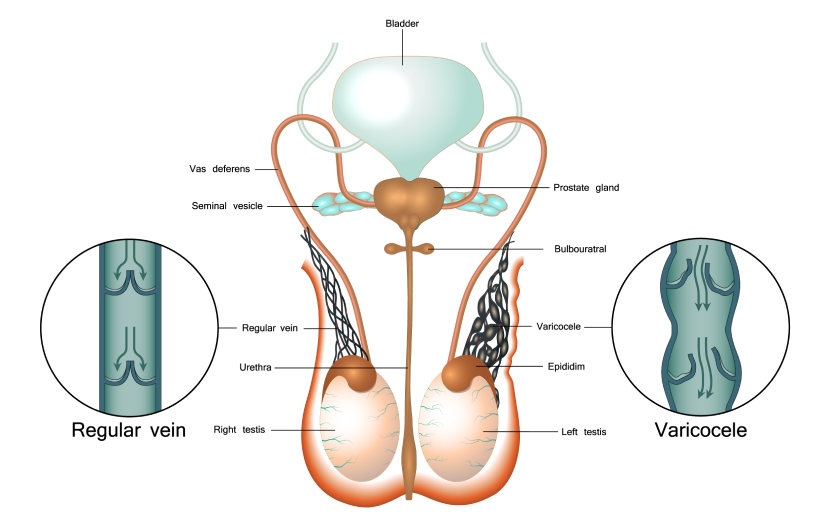Varicocele: Enlarged Veins Within the Scrotum
What Is a Varicocele?
A varicocele is an enlargement of the veins within the scrotum, similar to varicose veins that occur in the legs. These dilated veins disrupt normal blood flow from the testicles, leading to pain, swelling, and potential fertility problems. Varicoceles are one of the most common causes of male infertility, affecting up to 15% of men and up to 40% of men with infertility issues.

Common Symptoms of Varicocele
Not all varicoceles cause symptoms, but when they do, men may experience:
A dull, aching pain or heaviness in the scrotum
Visible or enlarged veins that may look like a “bag of worms”
Testicular shrinkage (atrophy), often on the left side
Reduced fertility due to poor sperm count, motility, or quality
Although some men have no symptoms, Treating a varicocele can relieve pain, prevent further testicular damage, and h7
Causes of Varicocele in the Scrotum
Varicoceles occur when the valves inside the veins of the spermatic cord don’t work properly. This causes blood to pool in the scrotum, leading to vein enlargement. While the exact cause isn’t always known, they typically develop during puberty and may worsen over time if left untreated.
Treatment Options
Not every varicocele requires treatment. If your varicocele is small, painless, and not affecting fertility, your doctor may recommend observation with periodic monitoring. However, when symptoms interfere with quality of life or fertility, several effective treatment options are available.
Observation & Symptom Management
Best for: Men with small, painless varicoceles that don’t affect fertility.
Approach: No active intervention, but regular follow-ups and imaging may be recommended.
Symptom relief: Over-the-counter pain relievers, scrotal support, and lifestyle changes (avoiding heavy lifting or prolonged standing) may help reduce discomfort.
Surgical Varicocelectomy
What it is: A traditional surgical procedure where a urologist makes an incision in the groin or abdomen to tie off the enlarged veins and redirect blood flow.
Techniques: Open surgery, laparoscopic surgery, or microsurgical varicocelectomy.
Advantages: Proven effectiveness; long track record.
Drawbacks: Requires general or regional anesthesia, incisions with stitches, longer recovery time, and a small risk of complications such as hydrocele formation or testicular artery injury.
Recovery: Usually takes 1–2 weeks before returning to normal activities.
Varicocele Embolization (Minimally Invasive Option)
What it is: A non-surgical, outpatient procedure performed by an interventional radiologist. A thin catheter is inserted into a vein (in the groin or neck) and guided to the affected testicular vein. Using X-ray imaging, tiny coils or a special medical solution are placed to block abnormal blood flow and relieve pressure on the veins.
Advantages:
No large incisions or stitches
Performed under local anesthesia with light sedation
Minimal pain and scarring
Faster recovery with most patients return to normal activity in 24–48 hours
Very low complication rate
